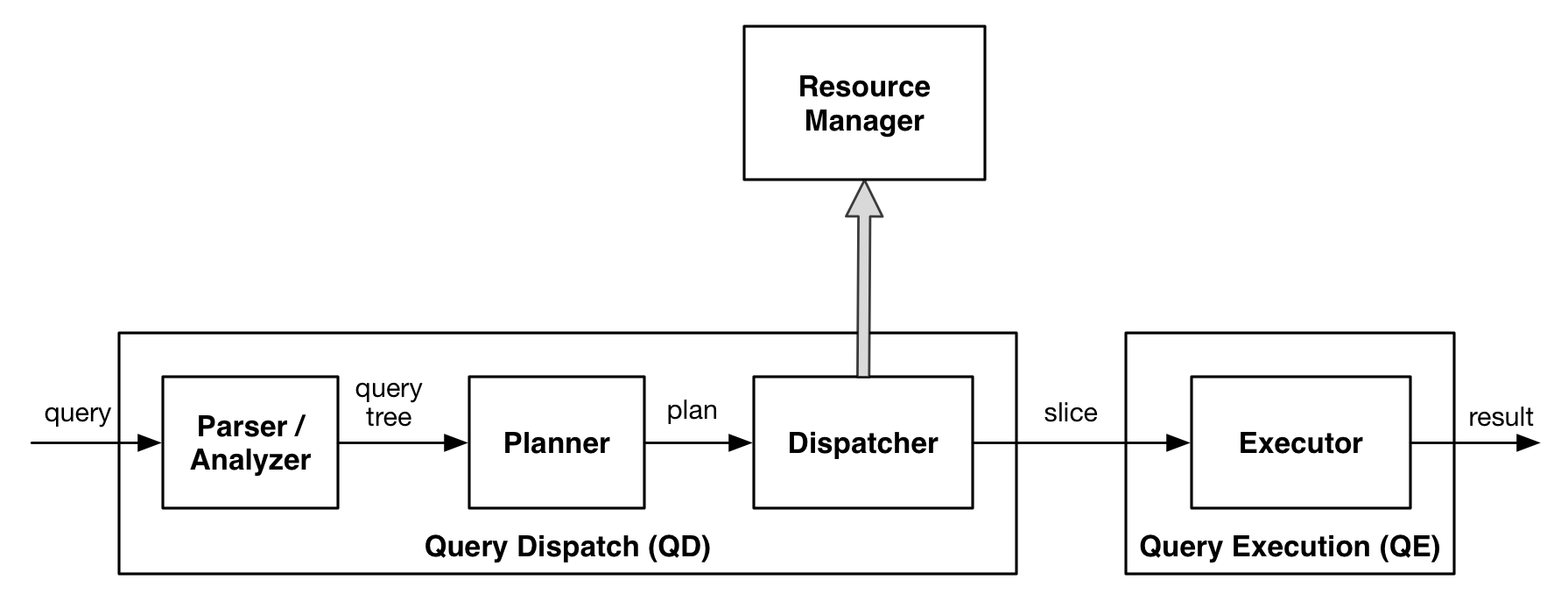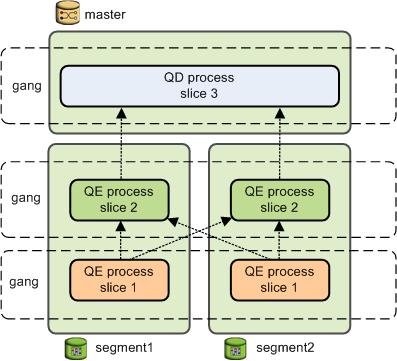About HAWQ Query Processing
This topic provides an overview of how HAWQ processes queries. Understanding this process can be useful when writing and tuning queries.
Users issue queries to HAWQ as they would to any database management system. They connect to the database instance on the HAWQ master host using a client application such as psql and submit SQL statements.
Understanding Query Planning and Dispatch
After a query is accepted on master, the master parses and analyzes the query. After completing its analysis, the master generates a query tree and provides the query tree to the query optimizer.
The query optimizer generates a query plan. Given the cost information of the query plan, resources are requested from the HAWQ resource manager. After the resources are obtained, the dispatcher starts virtual segments and dispatches the query plan to virtual segments for execution.
This diagram depicts basic query flow in HAWQ.

Understanding HAWQ Query Plans
A query plan is the set of operations HAWQ will perform to produce the answer to a query. Each node or step in the plan represents a database operation such as a table scan, join, aggregation, or sort. Plans are read and executed from bottom to top.
In addition to common database operations such as tables scans, joins, and so on, HAWQ has an additional operation type called motion. A motion operation involves moving tuples between the segments during query processing. Note that not every query requires a motion. For example, a targeted query plan does not require data to move across the interconnect.
To achieve maximum parallelism during query execution, HAWQ divides the work of the query plan into slices. A slice is a portion of the plan that segments can work on independently. A query plan is sliced wherever a motion operation occurs in the plan, with one slice on each side of the motion.
For example, consider the following simple query involving a join between two tables:
SELECT customer, amount
FROM sales JOIN customer USING (cust_id)
WHERE dateCol = '04-30-2008';
Query Slice Plan shows the query plan. Each segment receives a copy of the query plan and works on it in parallel.
The query plan for this example has a redistribute motion that moves tuples between the segments to complete the join. The redistribute motion is necessary because the customer table is distributed across the segments by cust_id, but the sales table is distributed across the segments by sale_id. To perform the join, the sales tuples must be redistributed by cust_id. The plan is sliced on either side of the redistribute motion, creating slice 1 and slice 2.
This query plan has another type of motion operation called a gather motion. A gather motion is when the segments send results back up to the master for presentation to the client. Because a query plan is always sliced wherever a motion occurs, this plan also has an implicit slice at the very top of the plan (slice 3). Not all query plans involve a gather motion. For example, a CREATE TABLE x AS SELECT... statement would not have a gather motion because tuples are sent to the newly created table, not to the master.

Understanding Parallel Query Execution
HAWQ creates a number of database processes to handle the work of a query. On the master, the query worker process is called the query dispatcher (QD). The QD is responsible for creating and dispatching the query plan. It also accumulates and presents the final results. On virtual segments, a query worker process is called a query executor (QE). A QE is responsible for completing its portion of work and communicating its intermediate results to the other worker processes.
There is at least one worker process assigned to each slice of the query plan. A worker process works on its assigned portion of the query plan independently. During query execution, each virtual segment will have a number of processes working on the query in parallel.
Related processes that are working on the same slice of the query plan but on different virtual segments are called gangs. As a portion of work is completed, tuples flow up the query plan from one gang of processes to the next. This inter-process communication between virtual segments is referred to as the interconnect component of HAWQ.
Query Worker Processes shows the query worker processes on the master and two virtual segment instances for the query plan illustrated in Query Slice Plan.
Figure: Query Worker Processes
